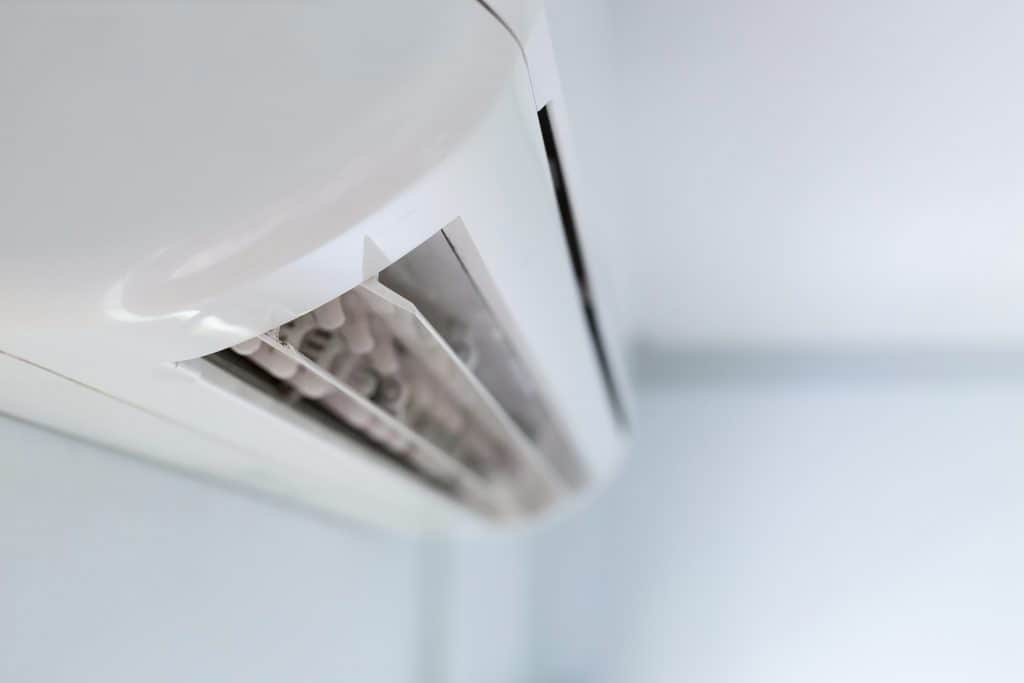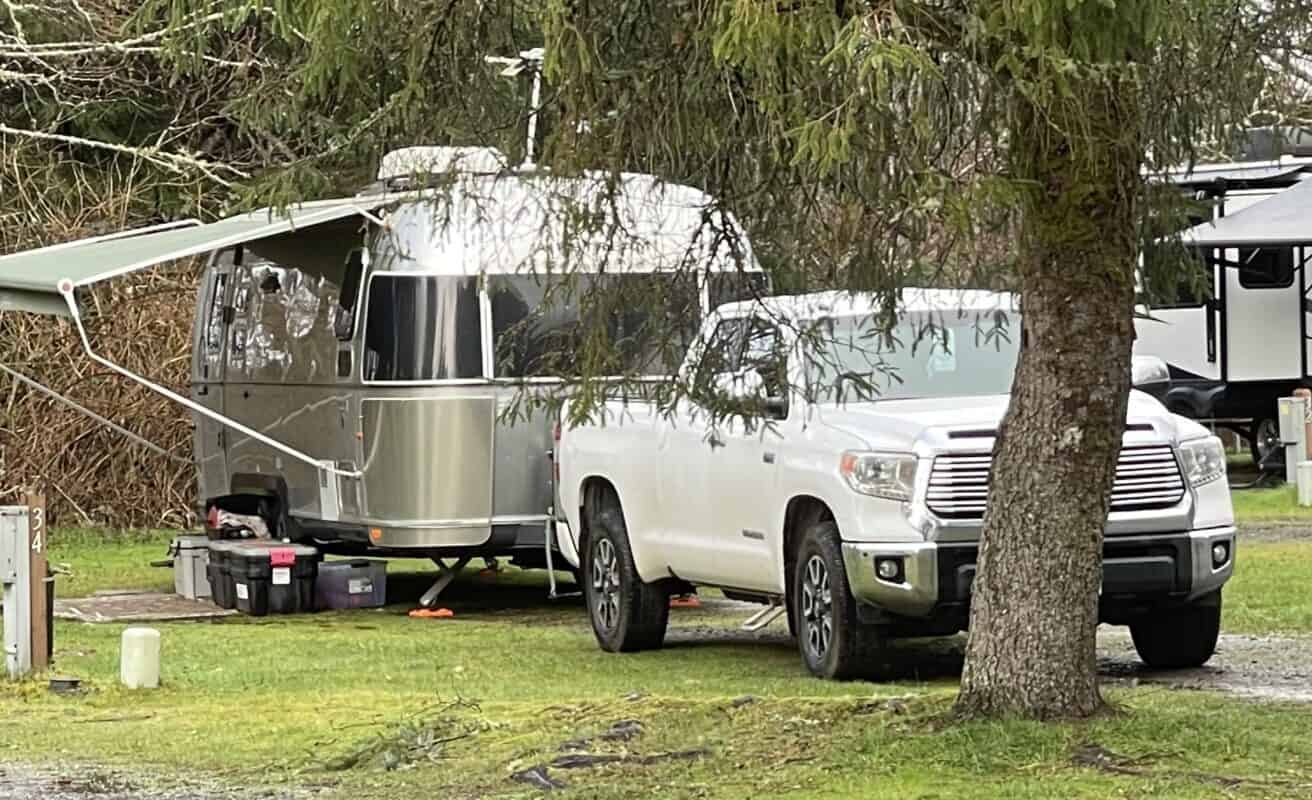
While traveling in a camper during the summertime, temperatures can reach record highs. This is why having an air conditioning unit in your camper is extremely important. However, when your AC unit quits working you are left with the question of how to fix it.
When your camper’s air conditioner runs out of refrigerant, it will need to be recharged and can be done by refilling the refrigerant. Depending on the type of air conditioner in your camper and where the unit is located, it may be either easier or harder to recharge than other models. Some air conditioning units may also need to be recharged more often than others.
If you have never recharged a camper air conditioner before this task may prove to be quite difficult. Continue reading this article to learn about air conditioners, common problems and how to fix it, and most importantly, how to recharge the air conditioner in your camper! Let’s get started!
Common Air Conditioner Problems
Recharging an air conditioner can be a little more difficult than recharging a home air conditioner unit. This is due to the fact that RV units are rarely (if at all) designed to be opened.
Depending on the model and placement of air conditioning unit in your camper opening up the unit may cause damage to the casing and the mechanisms inside.
Before you decide your camper air conditioner needs to be recharged, be sure to troubleshoot for other problems that may be causing the unit efficiency problems.
Dirty Filter
One of the most common problems that cause an air conditioner to stop working is something as simple as a dirty filter!
If you notice that your camper’s air conditioner is not putting out enough cold air to cool you down on the road, be sure to check the air filter on your unit.
A problem as small as a dirty filter can lead to several electrical problems that will further inhibit your camper air conditioner’s ability to function properly.
Some problems that may arise from a dirty filter are lack of airflow and freezing up (we will discuss what this problem means later).
Not only can a dirty filter cause problems with the efficiency of your air conditioning unit, but it can spread harmful germs and allergens throughout your camper.
By cleaning or changing the filter regularly you are able to help keep your family healthy and your air conditioner unit in operating condition for a longer amount of time.
Watch this short clip to see how easy it is to clean your air conditioner’s air filter!
Freezing Up
As promised we are now going to discuss what it means for your camper’s air conditioning unit to “freeze up.”
When I first heard someone say that our air conditioner was “freezing up,” I thought that it was a good thing! After all, isn’t that what it is supposed to do, freeze the air? Well, turns out that when your camper’s air conditioner is “freezing up” can mean several different things are happening (unfortunately, none are good).
Watch this video to learn 8 reasons why your camper’s air conditioner may be freezing up!
Although this video was made with a home air conditioning unit in mind, a lot of (if not all) of the information can apply to your camper’s air conditioning unit as well!
In the event that the air conditioner in your camper begins freezing up, check to see if any of the 8 problems listed in the video apply to your situation.
If you have solved each of the problems mentioned and your camper’s air conditioner is continuing to freeze up, you may need to call a service technician to solve the problem.
Air Leaks
One of the most common complaints of camper owners is that their air conditioner is not putting out strong airflow. A lack of airflow is most likely a result from one or more air leaks in the air duct system.
This common problem allows air to escape through the ducts and vents before reaching the interior of the camper, in turn, reducing the air flow’s strength.
If your air conditioner is not putting out enough air to cool down your camper, inspect the air ducts for any holes or leaks. Quickly and easily cover any leaks you find with some aluminum foil tape. Order a roll for your camper by clicking here!
Check the Plugs
After checking for any of the previous problems we discussed above, if performance problems still remain, you may need to check the air conditioner’s wiring.
There are several things that could affect the wiring inside your camper’s air conditioning system. Some of these issues may include animals chewing on the wires, water damage, overheating, or simply just wear and tear.
If one or two plugs in your camper’s air conditioner unit quit working, it may be hard to notice and might even be diagnosed as a completely different problem.
In the following video, you will see an example of how camper air conditioner cords can easily go unnoticed and mistaken for a different problem. You will also see how to access the wiring system and how to correct the problem!
Recharging a Camper Air Conditioner
After troubleshooting for any other problems that arise, there are a few simple steps to follow in order to properly recharge the air conditioning unit.
1. Purchase Refrigerant
Before you begin recharging your camper’s air conditioning unit, first identify what refrigerant your unit takes. You can find what type of refrigerant your air conditioning unit uses by reading the nameplate or looking in the owners manual.
One of the more popular refrigerant products is A/C Pro ACP-100. With the purchase of the A/C Pro ACP-100, you will also receive a refrigerant gauge. Click the link above to order yours today!
2. Cut off the Power Supply
After getting the correct refrigerant for your air conditioner, locate the breaker panel in your camper. Be sure to turn off any breaker that supplies power to the air conditioning unit.
Nothing will be more shocking when recharging your air conditioner than a surprise jolt of power from a fully powered air conditioner.
3. Remove the Plastic Casing
Once you are certain that the air conditioner is no longer receiving any power, you can open the air conditioning unit.
How your unit opens (or if it is even designed to open) will depend on the model. If you do not have an owner’s manual to the unit, examine the exterior of the unit looking for any clips or clasps that hold the casing on.
Besides being careful not to break the air conditioning casing, be sure to watch from any wasps or bees entering the unit. If you see any flying in or out of the unit, take precautions for a nest or hive to be inside (this is extremely common for rooftop air conditioning units).
Be sure to remove any nests or hives that you find inside your air conditioning unit in order to keep your unit working properly and to keep your family safe!
4. Check Refrigerant Levels
Once the air conditioner casing is open and all hives or nest have been removed, you are able to begin recharging the unit.
Before adding any refrigerant to your camper’s air conditioning unit, use a refrigerant gauge to see what levels you are currently at.
Once again, depending on your model, checking this level may be more difficult than in others. In most RV air conditioning units, there is not a place to simply “check the refrigerant levels.” In order to so, you may need to install a line tap.
A line tap is simply a small mechanism that opens your refrigerant line in order to attach a gauge to. This tool will put a small hole in the refrigerant line and if not done properly can cause greater damage to your air conditioner. Click the following links to purchase your line tap and refrigerant gauge now!
Be sure to follow the instructions carefully and if necessary, take your camper to a professional to do this maintenance.
Once you have your line tap and gauge ordered, watch the following video to learn exactly how to install a line tap properly in your camper’s air conditioning unit and how to refill the refrigerant levels.
As we saw in the video if your gauge is registering below 30 or 40 degrees for refrigerant evaporation temperature, your refrigerant levels are most likely low.
Be sure to view how much refrigerant your air conditioning unit can hold and continue to check the refrigerant levels as you go.
5. Test the Unit
Now that you have recharged your camper’s air conditioning unit, you can now complete my personal favorite step in the recharging process.
Test the unit!
Grab a cool drink, grab a good book or put on a movie, and run the air conditioner for awhile!
If the air conditioner still isn’t putting out the desired airflow or is producing warm air troubleshoot for any other problems again. If problems persist, consider taking your camper to a mechanic.
However, if after recharging the air conditioner the unit begins performing more efficiently, you are able to start enjoying long camping trips in the hot summer sun again!
Camper Air Conditioner Unit Maintenance

As we learned while reading the previous sections, there are many different problems that can affect the air conditioning units in both our homes and campers.
No matter where our air conditioner is located in our camper, it is unlikely that the thought of caring for it properly passes through our mind often.
However, if we remind ourselves to care for our air conditioning units often and with proper maintenance, we are able to prevent any serious problems from hindering our units from working properly.
Be sure to add the following tasks to your camper’s routine maintenance list and enjoy years of literally cooler camping!
Clean the Filter
Cleaning the filter on your camper’s air conditioner will take only a matter of seconds but is the first key step to keeping your unit working properly.
You should check both the filter inside the camper as well as the filter on the outside on the roof of the camper. If you have a handheld vacuum, simply remove the filter and run the vacuum over it on a lower setting.
You should clean out the air filter in your camper’s air conditioner at the beginning and end of every camping season. Once the filter begins breaking down be prepared to replace it with a new one as soon as possible!
Clean the Upper Conditioning Compartment
Most of our camper’s air conditioning unit is located on the roof of our camper and is therefore exposed to water, rust, and little critters.
Areas that need to be tended to in the upper conditioning compartment are the condenser coil, the evaporator coil, the motor, the fan, and at times, the fluid lines.
Condenser and Evaporator Coils
The condenser and evaporator coils of your camper’s air conditioning unit are comprised of a series of aluminum fins. These fins can get quite dirty at times and can easily be dented.
Keeping these coils clean will allow air to pass through them easier and will increase the efficiency of your camper’s air conditioner.
Start by spraying some evaporator cleaner on the evaporator coil and follow the instructions on the bottle. You can order your bottle of evaporator cleaner by clicking here!
After it has sat for some time if the directions instruct you to rinse the spray off the coil, be sure to do so with a gentle spray bottle. Follow up the rinse of your coils by combing out the aluminum fins that have been dented together.
To do so you will need a special tool made for separating these fragile fins. Click here to find the Fin Comb to get the job done!
Motor, Fan, and Lines
The motor, fan, and fluid lines are all prone to collecting moisture, rust, and debris. While doing your routine air conditioner maintenance, be sure to watch for any signs of rust and to remove any dirt or debris that is caking on the unit.
To help you camper’s air conditioning unit’s motor run smoother, apply some lubricant to the bearing of the motor.
Once the motor, fan, and fluid lines are free from debris and rust simply reseal the air conditioner and start packing for your next camping trip!
Want to learn more about air conditioner maintenance? Watch this next video to see how “Love Your RV” maintains the air conditioning unit on their camper!
Note: In the video, you see him spinning the motor on his air conditioner by hand. Do not spin this motor by hand, doing so will wear out the motor faster and can cause damage to its mechanisms.




I have a 2022 travel trailer with 2 GE units. They are not blowing cold like last year. I have checked the obvious items such as air filters and reset the breaker. This trailer is only a year old was not heavily used. Is it possible that these units are low on refrigerant? The compressors kick on etc. so I don’t believe this is an electrical issue. Any tips or checks you may give me would be greatly appreciated. Thanks
What would cause my Mercedes motor home air conditioning unit on top of the motor home roof to leak water through air conditioning vent?
Most likely the weep holes are plugged with debris. You’ll have to climb on the roof and clear them out.
It sounds like the evaporator drip tray is overfilled, most likely clogged with debris. It is located on top of your rig, underneath the ac unit cover. There should be a condenser and evaporator. Look for a plastic tray under the evaporator.